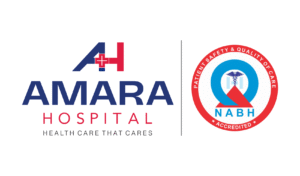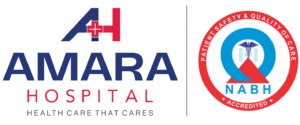














FOR MRI SERVICES
SPECIALTIES & SERVICES
Amara Hospital is a multi-specialty hospital that offers the best of both
worlds – finest healthcare practices and optimal affordability

Critical Care Medicine
At Amara, we provide specialized care to patients with life-threatening conditions who require comprehensive care and intensive monitoring.

Anesthesiology
The Department of Anesthesiology uses the most advanced, safe and patient-focused techniques in the delivery of anesthetic care.

Dermatology
Amara Hospital’s dermatology services cover the latest and most effective treatments and procedures in Skin and Hair care

General Medicine
The Department of General Medicine deals with the prevention, diagnosis and non-surgical treatment of various diseases.

Pediatrics
Our team will manage the overall physical and behavioral health of your child, including routine checkups, immunization and treating illnesses.

Preventive & Lifestyle Medicine
We aim to proactively prevent disorders through diagnostic screening and also offer counselling to inculcate healthy habits.

Dental Medicine
We promise you a comfortable and pain free experience during your treatment.

Orthopedics
The Department provides state-of-the-art treatment in all fields of Orthopedic Surgery for adults and children.

Spine Orthopedics
The Spine Care team at Amara is dedicated to handling the complete spectrum of spine ailments of all age groups.

Cardiology
AMARA Cardio is a dedicated team of Cardiology, Cardiothoracic Surgery, Emergency Medicine and Critical Care doctors, providing round the clock cardiac services.

ABOUT AMARA HOSPITAL
Varaprasad and Ramadevi Gourineni are an NRI doctor couple who share a great passion for patient care and teaching. They returned to India with a commitment to provide service to their hometown and to provide learning/employment opportunities for young professionals in Rayalaseema.
Amara Hospital will be a multi-specialty, one-stop solution for all of our patients’ healthcare needs. We will focus on both Primary and Specialty care. We aim to provide health care with international standards at affordable prices. Both national and international faculty will be visiting to practice and teach at this institute.
We Are Empanelled With :

Dr. NTR
Vaidya Seva Trust

Employee Health
Scheme (EHS)

BSNL
MOUs done with :

IIT - Tirupati

AAI

CISF

NARL

SHAR

NSU
Our Reviews
Trustindex verifies that the original source of the review is Google. Good service and consultationTrustindex verifies that the original source of the review is Google. Mrly experience with hospital and the staff nurses and doctors the way taking care and dealing patients was good. Mounika in reception helped to consult right doctor for my problem.Cost effective, I truly believe this is the best in tirupatiTrustindex verifies that the original source of the review is Google. Great hospital with good facilities, staff are friendly, only two things are dispointing is food taste in cafeteria and delay time for consulatationTrustindex verifies that the original source of the review is Google. Best option for in and around tirupati people. Need not to go to Chennai or Bangalore l. All facilities are provided with super luxury at affordable prices. One stop for all health issuesTrustindex verifies that the original source of the review is Google. 🌟 Amara Hospital – ENT Surgery Review 🌟 I recently had my nose surgery at Amara Hospital, and I genuinely couldn’t have asked for a better experience. Dr. Khaleel from ENT was exceptional he explained every step with patience, ensured I felt comfortable throughout, and his expertise made the entire procedure smooth and successful. A special mention to Nurse Shravani, who was by my side every single time I needed support. Her kindness, quick response, and calm nature made the recovery period so much easier. From consultation to surgery to follow-ups, the hospital’s facilities and staff were consistently excellent. Clean environment, proper care, and truly professional service. Highly recommend Amara Hospital for ENT treatments. Grateful to Dr. Khaleel and Nurse Shravani for their outstanding care! 🙏💐❤️❤️Trustindex verifies that the original source of the review is Google. I recently visited Amara Hospital for a brain-related health concern, and I’m extremely grateful for the care provided by Dr. Anadh sir and Dr. Yaswant sir Both doctors were highly professional, calm, and supportive throughout the process. They explained the condition and treatment plan clearly, answered every question with patience, and made sure I felt comfortable and confident. Their expertise and kindness made a big difference during a stressful time. I highly recommend Amara Hospital, especially Dr. Anadh sir and Dr. Yaswant sir , for anyone needing brain-related medical care.Trustindex verifies that the original source of the review is Google. I vist ent doctor sir is very very good dr. Khaleel sir taking supportive care and talking friendly to the patientsTrustindex verifies that the original source of the review is Google. I felt responsible more than happy to share my experience with Dr.Lokesh Sir M.D at Amara hospital .Hope this review will reach and help so many poor and needy people of rayalaseema in getting proper treatment.From the moment I entered his cabin , felt confident.Sir evaluated my father’s condition(Anemia , decreased appetite and loss of weight) with basic blood investigations and ultrasound abdomen . The way he explained about the condition really superb. He treated my father with good human touch and care .Iam grateful to have a consultation with Dr.Lokesh Sir @ Amara Hospital. Such a doctor with enormous experience and knowledge.
Outreach Clinics
Address:
Lifeline Hospital, Kadapa
Door no:21 460, Palem Papaiah Street, Seven Roads Circle, Kadapa, Andhra Pradesh 516001
Timings:
Every Month 2nd Saturday, From 10am to 2pm
For appointment: +91 9550031833 / 7993932777
Email:
appointments@amarahospital.com
SISA HOSPITAL
6-3-252/B/8, Lane Opp: More Mega Store
Eramanzil, Punjagutta,
Hyderabad, Telangana 500004
Timings:
June 9th 2025 from 10am to 2pm.
For appointment : +91 – 9066462996 / 9066362996
Email:
appointments@amarahospital.com





